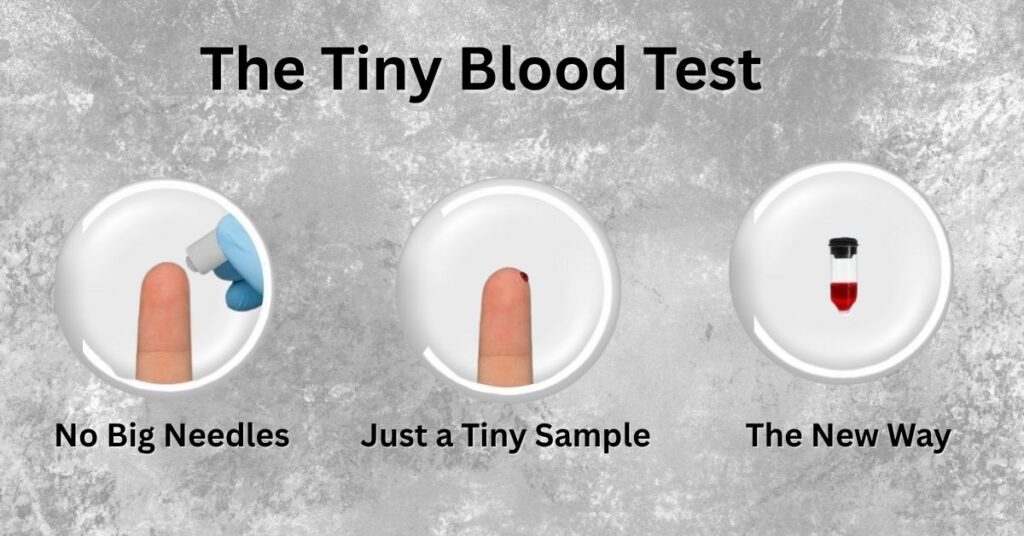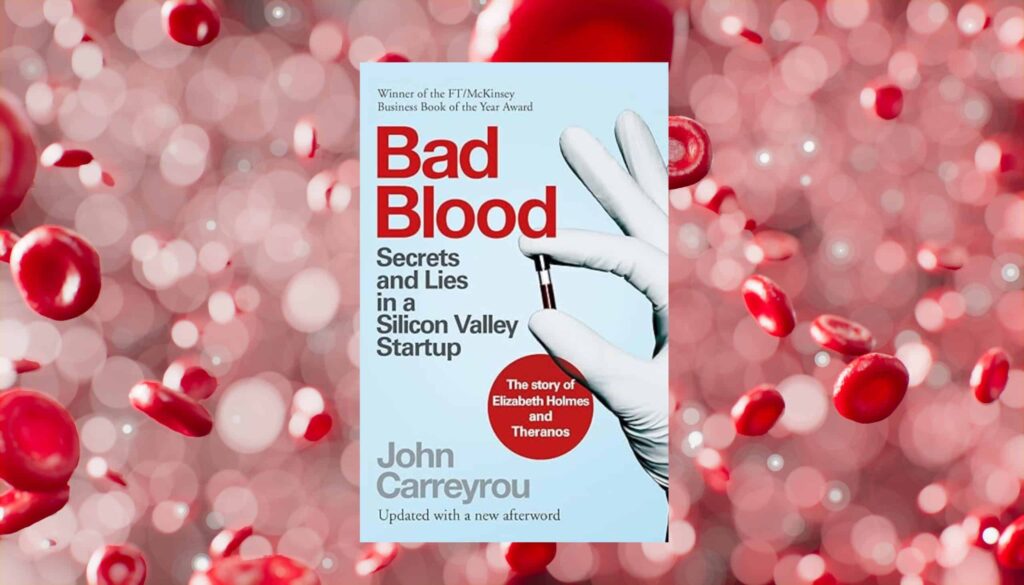Elizabeth Holmes was once known as ‘The Next Steve Jobs,’ A Beauty with Brains, the cover star of Forbes and Fortune — rose like a 19-year-old young entrepreneur in a Silicon Valley fairytale. But the story took a darker turn. Theranos, her startup, once a model of innovation, became a symbol of lies, fraud, and media-fueled fake claims. Elizabeth Holmes went from being a star in Silicon Valley to being called one of Fortune’s ’19 Most Disappointing Leaders.’
The case about the rise and fall of Holmes’ company, “Theranos: Fake It till You Make It?”, is about more than just an entrepreneur in over her head, an overly trusting board, or venture capital and wealthy angel investors who got caught up in Silicon Valley hype.
Chapter 1: The Dream
The Vision
Elizabeth Holmes had a big dream. She wanted to create a way for people to test for many diseases using only a few drops of blood from a finger prick. This idea came from her fear of needles and her hope to help people get better access to their health information. Holmes believed that if illnesses could be found early, more lives could be saved. She wanted to change the way healthcare worked—by making it faster, easier, and more focused on preventing problems.

Early Days
At just 19 years old, Holmes left Stanford University to start her own company called Theranos. She was confident and spoke with passion. Her energy and big ideas impressed many people—professors, investors, and even politicians. Holmes said her invention, a small machine called the “Edison,” could run over 200 blood tests using just one drop of blood. It sounded like a huge step forward in medicine, and many people were excited to believe it could work.
Chapter 2: Rapid Rise
Funding and Valuation
After starting Theranos, Elizabeth Holmes quickly gained attention. Many people were excited about her idea of testing blood with just a few drops. Investors started giving her a lot of money to grow the company. By the early 2010s, Theranos had raised over $700 million.
The company became very valuable—worth about $9 billion. Because Holmes owned half of the company, she was listed as one of Forbes magazine’s richest self-made women. Many people saw her as a young genius who was going to change healthcare forever. Important and powerful people joined the Theranos board of directors. These included:

- Henry Kissinger – a former U.S. Secretary of State
- George Shultz – another former U.S. Secretary of State
- General James Mattis – a respected military leader
Having these big names made the company look even more trustworthy. Soon, Walgreens, a large pharmacy chain, made a deal with Theranos. They wanted to put the blood testing machines in their stores so that people could get quick tests easily. Everything looked like a huge success.
Media Hype
The news media also helped make Elizabeth Holmes very famous. She was on the covers of Forbes, Fortune, and other top magazines. Reporters praised her for being young, smart, and a woman in the tech world. Many stories called her the “next Steve Jobs,” and she even dressed like him—wearing black turtlenecks and speaking with confidence.

But most articles and interviews focused on her story, her clothes, and her big goals. They didn’t ask many questions about the science or technology behind the company. Almost no one checked if the blood testing machines really worked. People wanted to believe in her dream so badly that they didn’t look too closely at the facts.
Chapter 3: The Cracks Begin to Show
Red Flags
Even though Theranos looked like a huge success, some people started to notice problems. Scientists and experts began asking questions about whether the technology actually worked. But Theranos didn’t give clear answers. Instead, the company said their methods were “trade secrets,” meaning they couldn’t be shared to protect their business.

Inside the company, some employees saw serious issues. The Edison machines often gave incorrect test results, and the technology didn’t work the way Holmes claimed. When workers tried to speak up, they were often silenced. Some were threatened with lawsuits, and others were made to feel scared for their jobs if they told the truth. The company wanted to keep everything quiet.
The Whistleblowers
One brave employee who spoke out was Tyler Shultz, the grandson of George Shultz, a famous board member of Theranos. Tyler noticed that the lab tests were often wrong and that the machines were not reliable. He tried to report the problems inside the company, but no one listened.
So, Tyler decided to take a big risk. He became a whistleblower, which means he told the truth about the company even though it was dangerous for him. He and a few other insiders secretly shared information with John Carreyrou, a reporter from The Wall Street Journal. With their help, Carreyrou began investigating Theranos. What he found would soon shock the world.
Read More: Japan Earthquake Technology: A Model of Ultimate Resilience, Innovation and Unshakable Spirit
Why Theranos Failed and How It Fooled Everybody
1. Unproven Technology
Theranos promised a revolutionary blood-testing machine that could run hundreds of tests using just a few drops of blood. But the core problem was that their technology—the Edison machine—did not actually work reliably. It gave inaccurate results and often failed to perform tests properly.
2. Secrecy and No Transparency
Theranos kept its technology a secret, calling it a “trade secret.” This meant they didn’t allow outside scientists or experts to see or test how their machines really worked. Without transparency, no one could verify the claims, but many trusted the company because of Holmes’s charisma and the exciting story.
3. Intimidation and Silence
Employees who saw problems and tried to speak up were often threatened or ignored. This kept critics quiet inside the company, preventing the truth from coming out earlier.
4. Media Hype and Investor Trust
The media praised Elizabeth Holmes as a visionary, and big investors gave Theranos hundreds of millions of dollars without demanding proof of how the technology worked. This created a bubble of trust around the company that was not based on solid evidence.
5. FDA and CMS Role
- The FDA (Food and Drug Administration) is responsible for making sure medical devices are safe and effective. Theranos tried to avoid strict FDA approval by calling many tests “laboratory-developed tests,” which are regulated less strictly.
- The CMS (Centers for Medicare & Medicaid Services) oversees the quality of labs. After inspections, CMS found serious problems in Theranos’s labs, including faulty equipment and poor quality control. Because of these issues, CMS banned Elizabeth Holmes from owning or running a lab for two years.
6. Failure to Meet Standards
Eventually, regulatory agencies and independent investigations showed that Theranos’s technology did not meet safety or accuracy standards. This caused partnerships to end, investors to sue, and the company to collapse.
Chapter 4: The Exposé
Carreyrou’s Investigation
In 2015, journalist John Carreyrou from The Wall Street Journal published a powerful article that changed everything. He revealed that Theranos was not really using its own machines for most of the blood tests. Instead, the company was secretly using regular lab machines made by other companies.
Even worse, Carreyrou found out that Theranos’s own technology—the Edison machine—was unreliable and often gave wrong results. This meant that many patients could have received false information about their health. This article was a huge shock to the public, the media, and the medical world. It started a wave of investigations from government agencies, health regulators, and other journalists.
Fallout
After the article came out, everything started falling apart for Theranos.
- Walgreens ended its partnership with Theranos and stopped offering its blood tests in stores.
- Theranos had to cancel thousands of test results, admitting that they were not accurate.
- The Centers for Medicare & Medicaid Services (CMS) banned Elizabeth Holmes from running or owning a medical lab for two years.
- Investors who had given the company millions of dollars felt betrayed and began filing lawsuits.
The company that once looked like the future of healthcare was now in serious trouble. Its reputation was ruined, and many people who once believed in Holmes felt cheated and angry.

Chapter 5: Legal Consequences
Criminal Charges
In 2018, Elizabeth Holmes and Ramesh “Sunny” Balwani, who was the president of Theranos and Holmes’s ex-boyfriend, were formally charged with serious crimes. They faced several counts of wire fraud and conspiracy. This means they were accused of lying on purpose to investors, doctors, and patients about how well their technology worked. The charges said they knowingly misled people to get money and trust.
Trial and Verdict
Elizabeth Holmes’s trial started in 2021. During the trial, the prosecutors showed many pieces of evidence proving that Holmes knew the technology didn’t work properly but still made false promises and claims to keep the company going.
In January 2022, the jury found Holmes guilty on four counts of fraud and conspiracy. She was later sentenced to spend over 11 years in prison. Sunny Balwani had a separate trial, where he was also found guilty of similar charges. He received a prison sentence of almost 13 years
Chapter 6: Analysis and Lessons
Why People Believed
The Theranos story shows how powerful a good story and strong personality can be. Elizabeth Holmes had a clear vision and told it in a way that inspired many people. She was young, confident, and passionate, which made investors and the media excited about her company. People wanted to believe her because the idea was very appealing: a simple, fast, and cheap blood test that could save lives.
Investors saw the chance to make a lot of money by supporting a company that promised to change healthcare. At the same time, they felt proud to be part of something that seemed to help millions of people. However, many ignored important warning signs because they didn’t want to believe the dream might be false. Some experts raised doubts, but their concerns were pushed aside or silenced. The excitement around Theranos made it easy for people to overlook the lack of proof and scientific evidence.
This shows how important it is to look beyond stories and charisma. It’s easy to get caught up in hope and excitement, but true success depends on facts and results, not just dreams.
Role of Ethics in Science and Business
One of the most important lessons from the Theranos case is the role of ethics in both science and business. Ethics means doing the right thing, even when it’s hard. In healthcare and technology, where people’s lives are at stake, honesty and responsibility are absolutely necessary. Ambition and innovation are good and necessary to make progress. But ambition without honesty can lead to dangerous results. In Theranos’s case, the company continued to claim their technology worked, even though they knew it didn’t. This not only harmed their business but also put patients’ health at risk.
Scientists, business leaders, and entrepreneurs must always be transparent about what their technology can and cannot do. They need to be willing to admit mistakes and make changes. Trust is built through truth, and without it, even the greatest ideas will fail. Theranos is a clear example of what happens when ethics are ignored. It reminds us that cutting corners or hiding the truth can lead to serious consequences for everyone involved.
Media and Investor Responsibility
The media and investors have a big responsibility in stories like Theranos. The media often loves stories about young, successful entrepreneurs, especially women breaking into male-dominated fields like tech. These stories inspire people and highlight important social changes. But sometimes, the media focuses too much on the person’s image—their style, age, or background—instead of carefully checking the facts behind their work.
In the Theranos case, many journalists and media outlets praised Elizabeth Holmes before confirming if her technology actually worked. This created a dangerous “echo chamber” where positive stories kept repeating without proper investigation. Good journalism means asking tough questions and seeking the truth, even if it’s uncomfortable.
Investors also must do their homework. They should not just rely on the excitement or the founder’s charisma. Before investing millions, they need to ask for real scientific proof and check if the technology has been tested and validated by experts. Blind trust can lead to huge financial losses and damage to public trust in innovation. Both investors and the media play key roles in protecting the public by demanding transparency and honesty from companies.
Read More: Empowering farmers with ‘Fosholer Chikitsha’: How Technology is Changing Bangladesh’s Economy
Chapter 7: Broader Impact
Impact on Health Tech Industry
The Theranos scandal changed the way people view and invest in health technology startups. After what happened, investors became much more careful before putting money into companies that promise big medical breakthroughs. They now demand strong scientific proof and reliable clinical tests before trusting a company.
Regulators—the government agencies responsible for making sure medical devices and tests are safe and effective—also became stricter. They started requiring more peer-reviewed studies and clinical trials, which means the technology has to be tested carefully and openly by independent experts. The Theranos case reminded everyone that health technology is very different from other tech areas like apps or software. Mistakes or lies in medicine can seriously harm people’s health, so it needs to be treated with much more caution and care.
Cultural Reflection
Theranos also highlighted a bigger problem in Silicon Valley culture: the attitude of “fake it till you make it.” This idea means startups sometimes pretend their product works perfectly, even if it’s not ready yet, hoping to improve it later.
While this mindset might work in software or social media apps—where mistakes usually don’t cause real harm—it can be very dangerous in healthcare. People’s lives depend on accurate medical tests and treatments, so dishonesty or shortcuts can be deadly. The Theranos story made many people realize that startup culture needs to change when working in sensitive areas like medicine. It showed that innovation should never come at the cost of safety or truth.
Regulatory Reforms
Because of Theranos, government agencies like the Food and Drug Administration (FDA) and the Centers for Medicare & Medicaid Services (CMS) have tightened their rules. They now watch lab tests and medical devices more closely to make sure they are safe and effective before they reach patients.
This case also affected education and business programs. Many universities and tech incubators have started teaching future entrepreneurs about the importance of ethics and responsibility. They emphasize that success is not just about ideas and money, but also about honesty and care for people’s well-being. Theranos became a powerful example of what can go wrong when ethics are ignored, inspiring change across the health tech industry and beyond.
Conclusion
The story of Theranos and Elizabeth Holmes is one of ambition gone wrong. It is a cautionary tale about what happens when vision and charisma override ethics, science, and transparency. Holmes’ fall from grace shocked the world, but it also sparked necessary conversations about accountability in tech and healthcare. As Silicon Valley continues to push boundaries, the Theranos case remains a powerful reminder: not all that glitters is gold, and in healthcare, trust must be earned through truth—not promises.
References :
Share via:


















